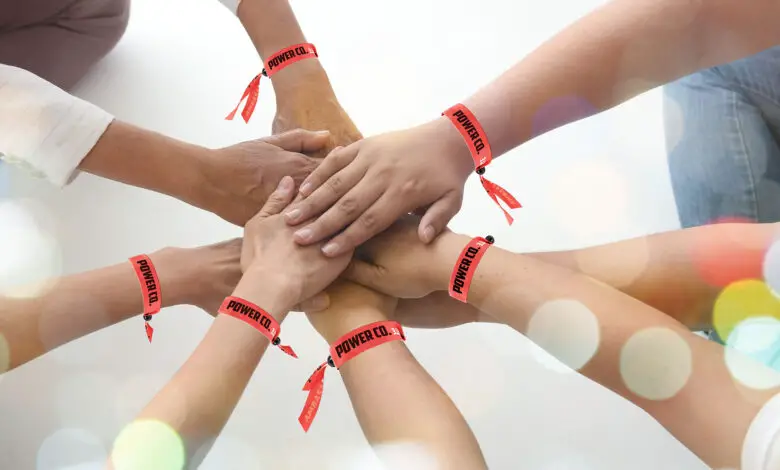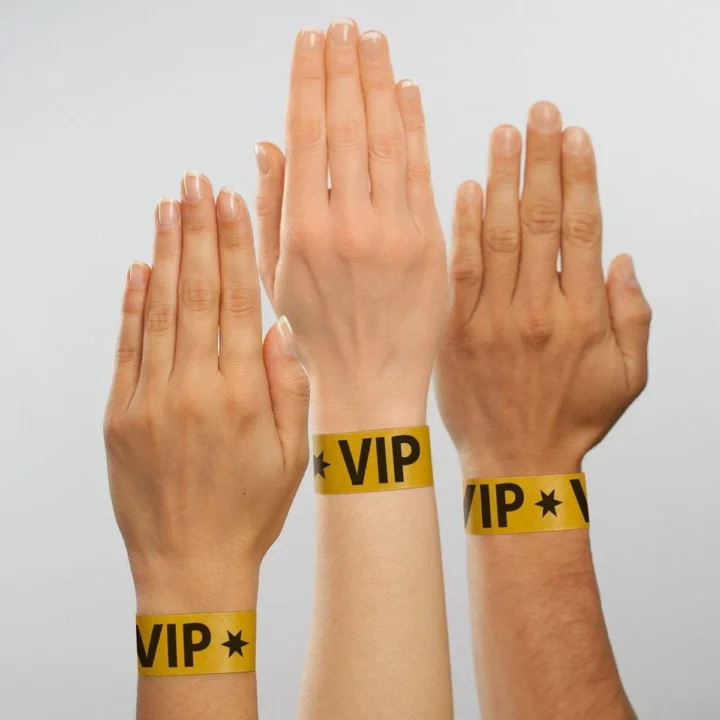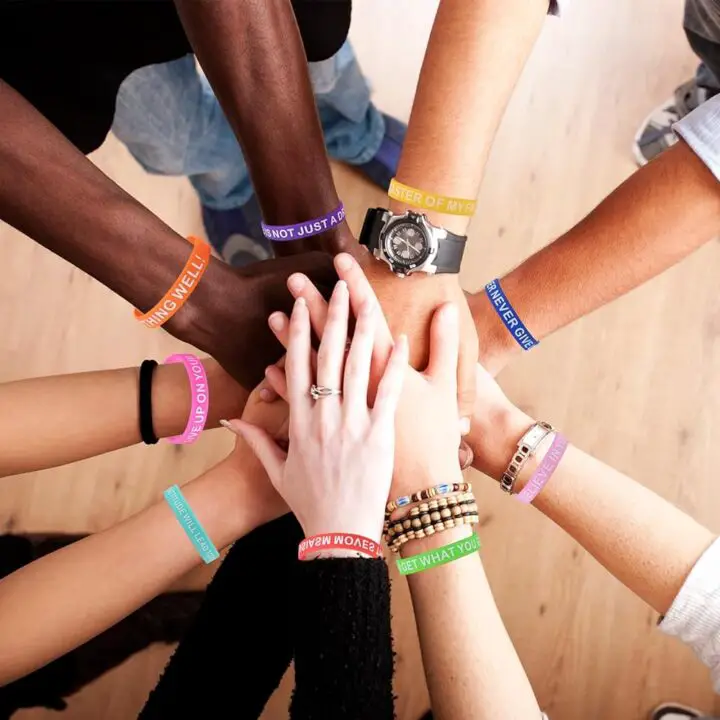The Psychology Behind Wearing Event Wristbands: How It Affects Attendee Behavior

Wearing event wristbands is a common practice at festivals, concerts, and conferences. But beyond their practical use as a ticketing mechanism, these wristbands play a significant role in shaping attendee behavior and psychology. This article explores the various psychological effects of wearing event wristbands, delving into topics like group identity, memory triggers, and social signaling.
The Psychology of Belonging
One of the primary psychological effects of wearing an event wristband is thesense of belonging it instills. When attendees wear a wristband, they’re not just wearing a piece of plastic or fabric; they’re wearing a symbol of inclusion in a specific group. This sense of belonging is crucial in large events where individuals can easily feel lost or overwhelmed. The wristband becomes a unifying symbol, creating an instant connection among strangers. This is particularly powerful in settings where shared interests and passions are the basis for gathering, like music festivals or fan conventions. Check out wristbands for sale.
Memory and Nostalgia
Event wristbands often become keepsakes, serving as tangible memories of an experience. The wristband acts as a trigger, transporting individuals back to the event, allowing them to relive the joy, excitement, and camaraderie they felt. This nostalgic value can be quite potent, with some individuals keeping wristbands for years as tokens of their experiences. The physical wristband thus becomes a gateway to a mental scrapbook of memories.
Status and Social Signaling

Wristbands often act as status symbols. At multi-tiered events, different wristbands can signify various levels of access or perks, such as VIP areas or backstage passes. Wearing these wristbands can create a sense of pride and exclusivity, reinforcing social hierarchies within the event space. They also serve as conversation starters, as attendees compare and contrast their access levels, fostering social interaction.
Security and Safety
From an organizational perspective, wristbands enhance security and safety at events. They allow staff to quickly identify attendees and ensure that only authorized individuals access certain areas. This visual identification tool eases security checks, making the event safer for everyone involved. Attendees, in turn, feel more secure, knowing that measures are in place to prevent unauthorized access.
Conformity and Compliance
Wearing a wristband can also increase conformity and compliance with event rules. The wristband serves as a constant reminder of the event’s authority and the attendee’s agreement to follow the rules. This subtle psychological effect can lead to smoother operations and fewer incidents of rule-breaking.
Sense of Immersion and Experience Enhancement
Event wristbands can enhance the overall experience of an event. They often feature bright colors, unique designs, and sometimes even technological features like RFID chips. These elements contribute to the immersive environment of the event, making the experience more memorable and engaging. In some cases, wristbands can interact with event installations, further integrating attendees into the event’s atmosphere.
Marketing and Brand Association

Wristbands also function as marketing tools. They often feature logos or slogans, turning attendees into walking advertisements for the event or its sponsors. This not only promotes the event but also fosters a stronger association between the attendee and the brand. After the event, the wristband continues to serve as a marketing tool, as others may see it and become interested in the event or brand.
Environmental and Ethical Considerations
While wristbands have many psychological benefits, it’s important to consider their environmental impact. Traditionally made from plastic or synthetic fabrics, wristbands can contribute to waste and pollution. Event organizers are increasingly aware of this and are exploring more sustainable options, such as biodegradable materials or digital wristbands. This shift not only reduces environmental impact but can also positively influence attendee perception of the event’s ethical stance.
The Role of Exclusivity and Anticipation
Event wristbands often play a role in building anticipation and a sense of exclusivity even before the event begins. When attendees receive their wristband in the mail or at the entrance, it marks the beginning of their event experience. This moment can create a sense of excitement and anticipation, heightening the overall experience. The physical act of putting on the wristband can be a ceremonial start to the event, symbolizing the transition into a different space or mindset. This anticipation and sense of exclusivity not only enhance the individual’s experience but also contribute to the event’s allure and reputation.
Identity and Self-Expression

Wristbands can be a form of self-expression for attendees. Customizable wristbands or a variety of designs allow individuals to choose one that best fits their personality or style. This aspect of choice can empower attendees, allowing them to express their identity within the context of the event. It’s not uncommon to see attendees coordinating wristbands with their outfits or choosing a specific wristband design that aligns with their personal brand or aesthetic.
Peer Influence and Group Dynamics
The presence of wristbands can influence group dynamics and peer behavior. Seeing others wearing the wristband can create a sense of peer pressure to conform and participate fully in the event. This can be particularly influential in events where participation and engagement are key, such as workshops or interactive conferences. The wristband serves as a subtle signal that everyone is part of the same experience, encouraging a collective mindset.
Event Wristbands as Cultural Symbols

Finally, event wristbands can evolve into cultural symbols, particularly for iconic events or festivals. They can represent a specific subculture or community, carrying connotations and associations that extend far beyond the event itself. For those deeply embedded in these cultures, wristbands can be badges of honor, symbolizing their dedication and connection to the community.
End Note
In wrapping up, it’s clear that the impact of event wristbands is far-reaching and multifaceted. They are not just tools for identification or security; they are powerful psychological symbols that influence behavior, enhance experiences, and create lasting connections. As we continue to navigate the evolving landscape of events, both physical and virtual, the role of wristbands and similar symbols will undoubtedly adapt and grow, continuing to shape the way we experience and remember our shared moments.

